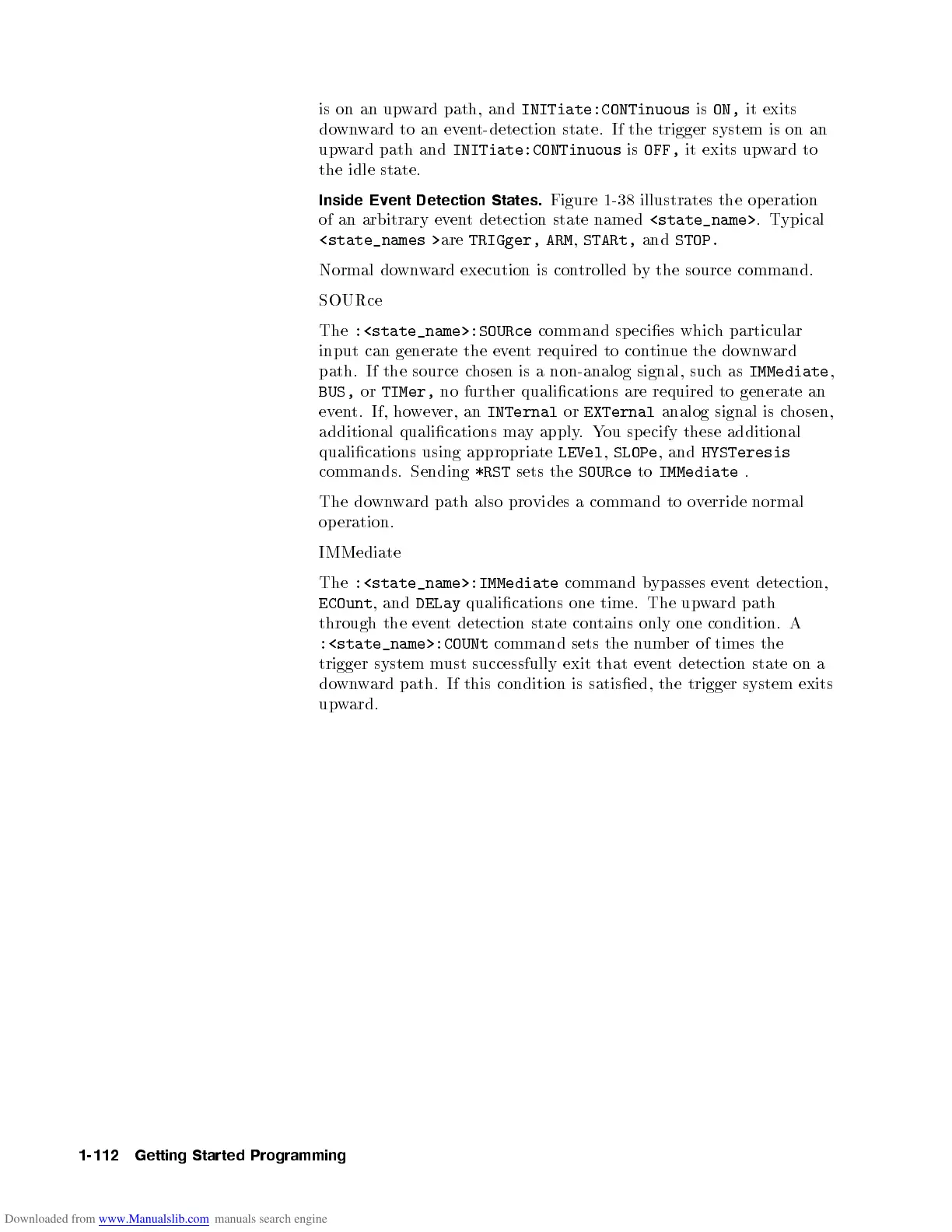is on an upward path, and
INITiate:CONTinuous
is
ON,
it exits
downward to an event-detection state. If the trigger system is on an
upward path and
INITiate:CONTinuous
is
OFF,
it exits upward to
the idle state.
Inside Event Detection States.
Figure 1-38 illustrates the op eration
of an arbitrary event detection state named
<state_name>
.Typical
<state_names >
are
TRIGger, ARM
,
STARt,
and
STOP.
Normal downward execution is controlled by the source command.
SOURce
The
:<state_name>:SOURce
command sp ecies which particular
input can generate the event required to continue the downward
path. If the source chosen is a non-analog signal, suchas
IMMediate
,
BUS,
or
TIMer,
no further qualications are required to generate an
event. If, however, an
INTernal
or
EXTernal
analog signal is chosen,
additional qualications may apply.You specify these additional
qualications using appropriate
LEVel
,
SLOPe
, and
HYSTeresis
commands. Sending
*RST
sets the
SOURce
to
IMMediate
.
The downward path also provides a command to override normal
operation.
IMMediate
The
:<state_name>:IMMediate
command bypasses event detection,
ECOunt
, and
DELay
qualications one time. The upward path
through the event detection state contains only one condition. A
:<state_name>:COUNt
command sets the number of times the
trigger system must successfully exit that event detection state on a
downward path. If this condition is satised, the trigger system exits
upward.
1-112 Getting Started Programming
